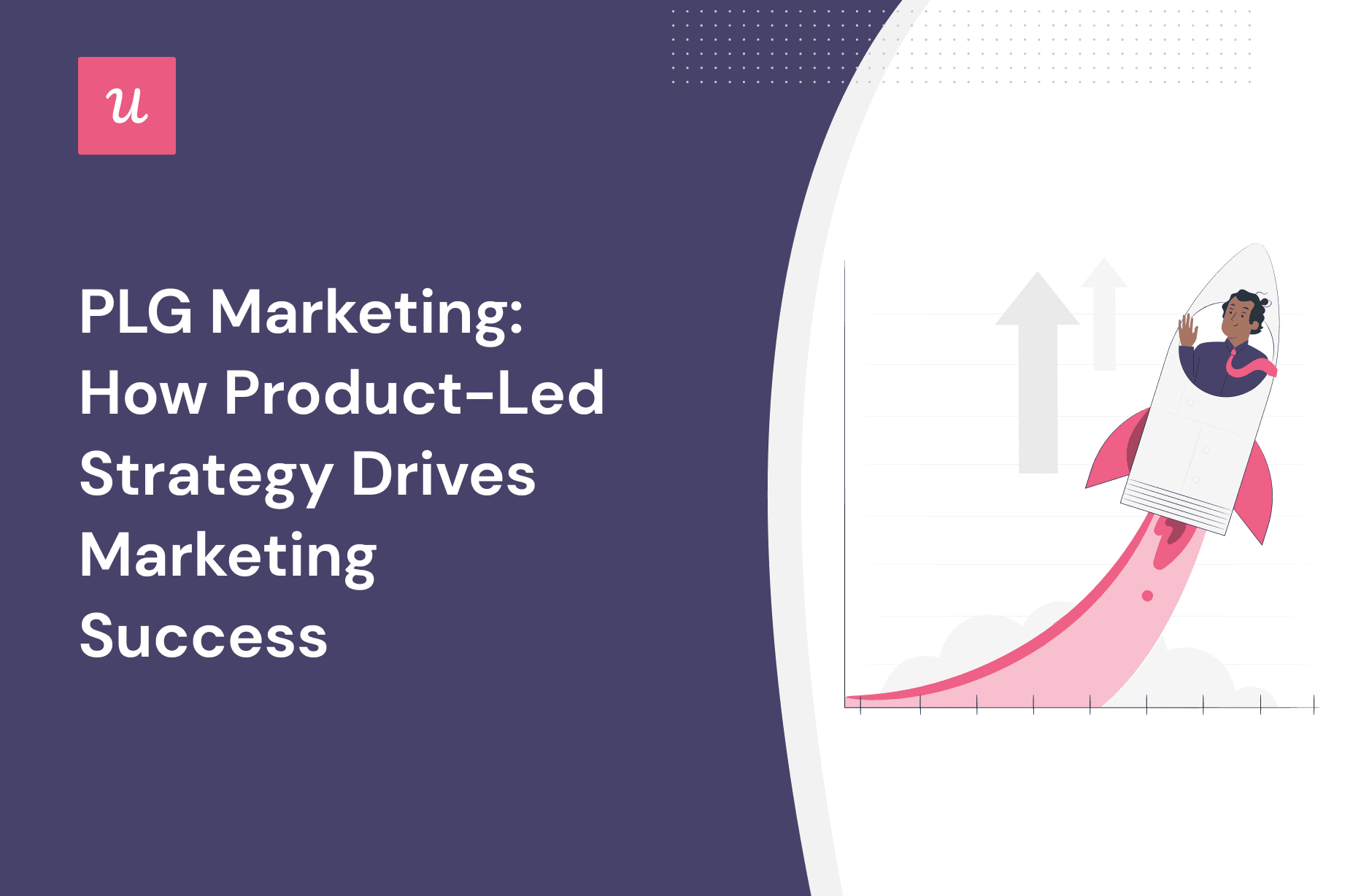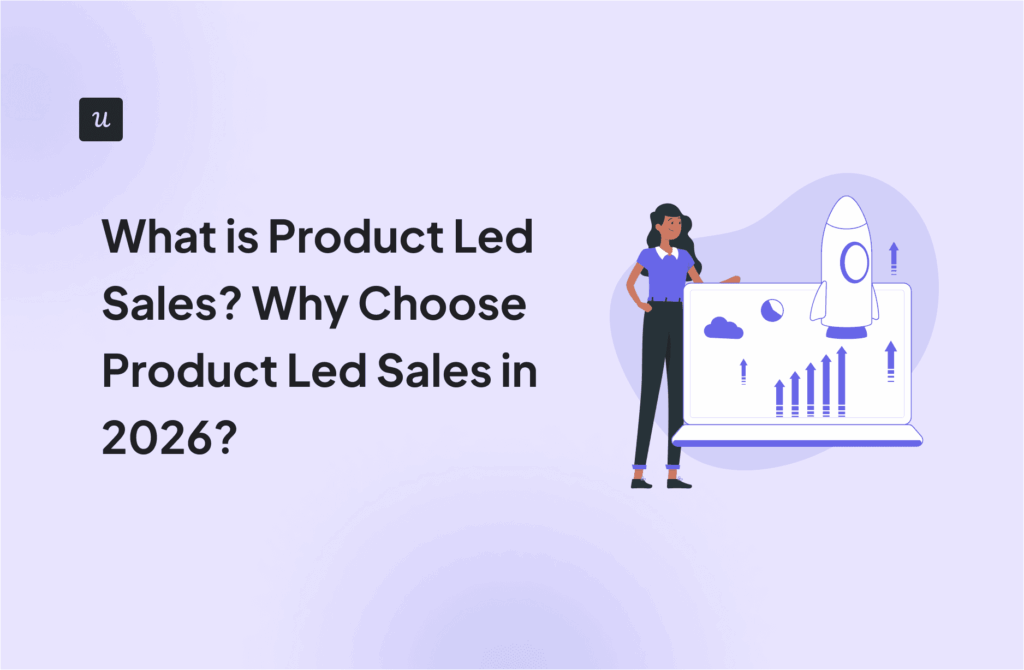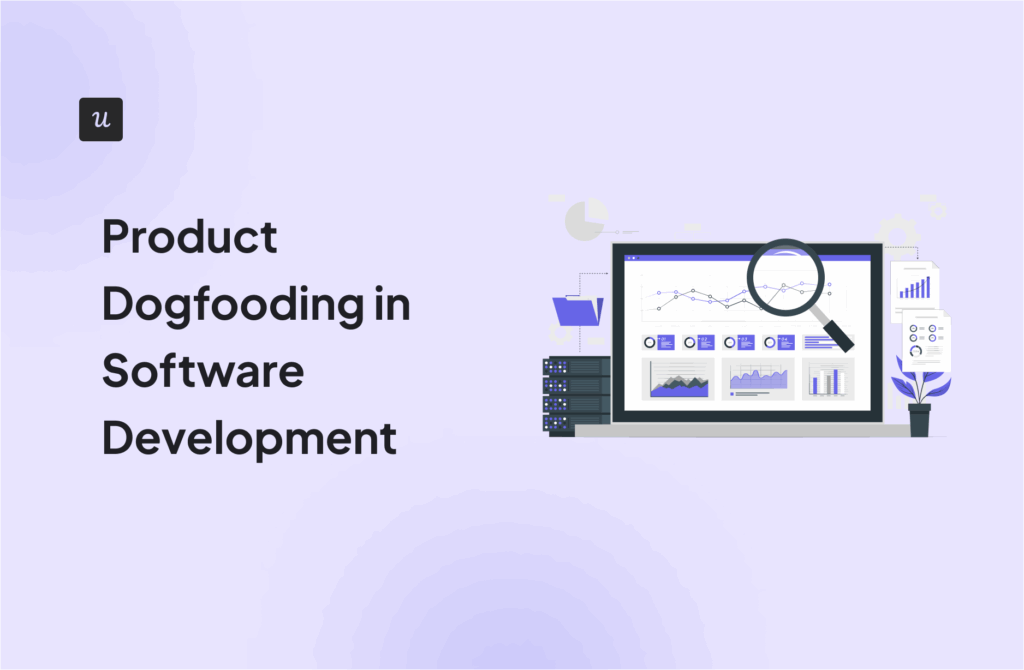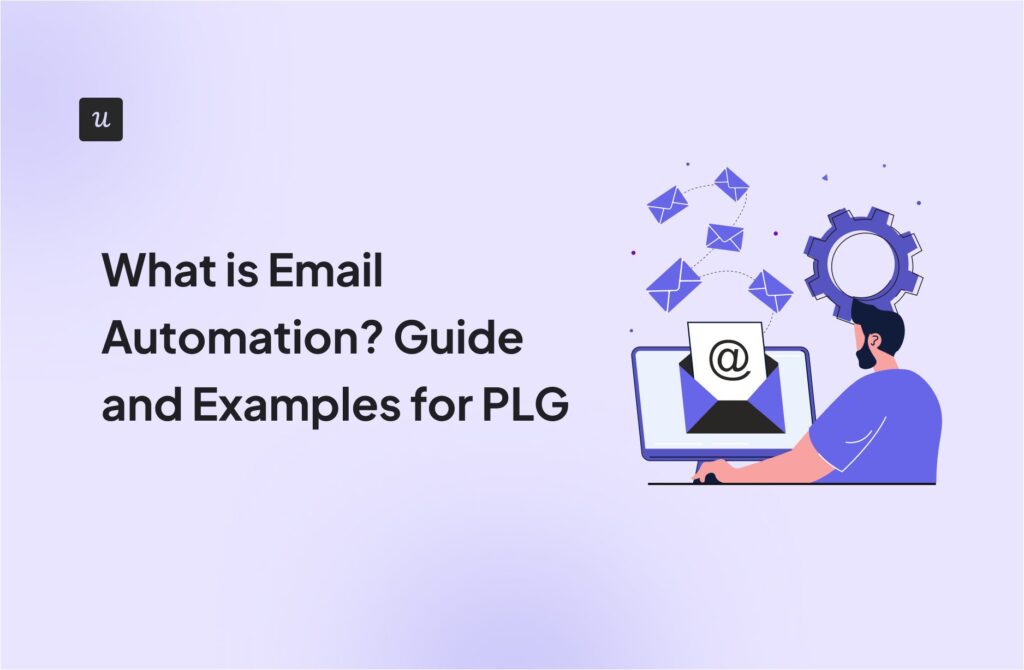
With so many product marketing strategies floating around the SaaS world, it can be hard to identify the right one. In this guide, we’re going to go over what PLG marketing is and why it just might be the perfect approach for your business.
Try Userpilot Now
See Why 1,000+ Teams Choose Userpilot

What is product-led growth?
Product-led growth or PLG is a go-to-market strategy that leverages the product itself as a means of generating demand, converting sales leads, and retaining users long-term. It’s one of many activation strategies used to acquire users and scale revenue in the SaaS industry.
What does PLG stand for in marketing?
As a go-to-market strategy, product-led growth (PLG) marketing has a few distinctive characteristics. First of all, PLG strategies use the product as the primary marketing channel. As such, marketers need to work very closely with customer success and product teams.
You’ll also notice frequent marketing experiments being run to optimize the long-term growth of the product. As a result of the close collaboration between the marketing and product teams, usage analytics will generally be the driver behind most decisions.
Product-led companies also prioritize user experience above all else since revenue growth will be directly tied to customer success (to a greater extent than non-product-led companies). This also means that the buyer journey will likely be more personalized for user segments in a product-led company.

Why invest in PLG marketing
There are a few key reasons why you should consider investing in PLG marketing:
- Lower customer acquisition costs (CAC): Product-led growth strategies rely on the product itself for user acquisition. This essentially means that you’re getting free users rather than having to spend a huge amount of money on paid ads or social media marketing.
- Faster sales cycles: When you’re running product-led businesses, the entire customer journey happens a lot faster since all your team members are working towards the same goal (optimizing the user experience).
- Higher user satisfaction: In addition to driving sales, product-led growth marketing also increases satisfaction rates among your users since your marketing team will be directing its resources towards new users instead of spending money on other channels.
- Increased retention rates: Product-led growth businesses often have higher retention rates since user satisfaction is increased and product usage is well-optimized.
What is PLG strategy? The 4 main criteria
To create an effective product-led growth strategy, there are four criteria that your sales, marketing and customer success teams need to meet. Let’s go over these four main PLG strategy criteria (Market, Model, Channel, and Product) in the subsections below!
Market
Product-led growth won’t be an applicable customer acquisition strategy in every market. You need to ensure you’re in the right market before starting a product-led company. In general, product-led growth marketing tends to work better the larger the market is.
Model
Your business model will be a big determiner of whether or not a product-led growth strategy is the right approach. Product-led growth companies benefit from shorter sales cycles, but this also means that every step from sign-up to checkout needs to be as simple and transparent as possible.
As a rule of thumb, a freemium product or free trial model works best with a product-led approach. If you’re not comfortable with the idea of free trials or freemium models, you can consider adding paid trials as an alternative.
Channel
For product-led growth to work, you’ll need to focus on low-cost channels with high viral marketing potential. These include content marketing, email marketing, PPC retargeting, and direct outreach from your sales team.
Furthermore, capitalizing on word-of-mouth marketing is a core tenet of product-led growth. Whether your reviews, testimonials, and case studies are coming from freemium or free trial users or paying customers, you need to leverage this social proof moving forward.

Product
Even the best product-led growth marketer won’t be able to generate sales if you aren’t offering a uniquely valuable solution that’s a good fit for PLG marketing.
SaaS companies need their product to offer broadly appealing value, powerful features, a quick time-to-value, personalized UX, and intuitive UI design if they want to achieve organic growth through product-led methods.
Key product-led growth metrics
There are countless metrics that you could look at but the four KPIs below are the most important when striving for product-led growth:
- Product-qualified leads: A product-qualified lead (PQL) is any person or business that has experienced the value your product provides — often through free trials or product demos. Improving PQL conversion rates is an absolute must for PLG companies.
- Time to value: The time-to-value metric tells you how long the gap is between a user creating their account and receiving value from the product. Sales-led strategies rely on the sales team to bring the time to value down, but PLG companies need to rely on their marketing team and in-app messaging.
- Activation rate: The user activation rate measures the percentage of users that reach an activation point. The activation rate can be calculated by dividing the number of users who reach a predetermined activation point by the total number of users who signed up.
- Retention rate: Your customer retention rate measures the ratio of customers that you’re losing or “churning” in a given period. High churn rates serve as a red flag that an underlying issue (or issues) is causing users to leave and slowing your company’s growth.
5 principles to succeed with PLG marketing
If you want to succeed as a PLG company, there are five principles that you need to adhere to.
Let’s take a closer look at each one!
1. Prioritize the onboarding experience
Onboarding flows are both the boon and bane of every software company. It’s the first impression that sets the tone for the rest of the customer journey. Nailing it will lead to higher customer satisfaction, more paid customers, and future revenue growth.
On the other hand, failing to create a fast, hassle-free onboarding process can cause software companies to lose leads that would have otherwise provided large customer lifetime values (LTVs).
In any case, it’s clear that boilerplate product tours with tedious steps aren’t going to cut it anymore. Instead, create an onboarding process that promotes customer interaction and only focuses on features that are relevant to the user.
Start by segmenting your users through a welcome screen so you can make the interactive onboarding process more personalized to their specific needs. Once they’ve settled into the product, you can deploy secondary or tertiary onboarding flows later on for more advanced features.
Remember, the earliest stages of the customer journey will often determine whether or not users sign up for a paid subscription at the end of their free trial.

2. Know (don’t guess) users’ jobs-to-be-done
Unless you understand your users’ jobs-to-be-done (JTBD) early on in the process, you won’t be able to make their experience as effective as it could be. A simple microsurvey could be all it takes to kick off the needs-based segmentation process.
It’s always better to ask about user goals instead of guessing their JTBD or over-generalizing. After finding out what your users need the product for, you’ll be able to show them the key components that could have the largest impact on their work.
JTBD data is also crucial for all customer education efforts. The better you understand the JTBD of users, the easier it will be to create self-service sales and support resources like knowledge bases or tutorial videos.
Grammarly lets their users set specific goals early on that will affect how their product experience progresses:

3. Step up your in-app messaging
In-app messaging is the bread and butter for all PLG marketing teams. With most customer touchpoints happening inside the product itself, perfecting your in-app messaging will benefit not only your PLG efforts but also your annual growth rate as a whole.
In-app guidance increases product adoption, reduces friction throughout the customer journey, and makes product-led marketing communications that much more effective when the time comes to launch a CTA.
To get the most out of your in-app messaging, you should use contextual triggers to ensure that the pop-ups, tooltips, or any other UI elements are triggered by specific events or user actions.
In addition to guiding users, in-app messaging can also be used for product announcements, upsells, or feedback collection. In-app messaging is effective for all types of customers from trial users to power users (except inactive users, who should be re-engaged via email).
Use in-app messages to remind users about all the features they should try out before their free trial ends. As a pro tip, you should use in-app messaging to highlight your stickiest features rather than choosing which features to promote at random.

4. Build product virality
Since PLG campaigns don’t use a lot of resources for paid marketing campaigns, it’s essential that you’re creating virality on the level of individual users. If you’re not making sure that your business benefits from the growth of your existing users, you’re doing something wrong.
A core focus should be to make your product easily shareable so active users never struggle to spread the word about it. Instead of traditional methods like creating a referral program, the PLG approach will make the product itself shareable.
Unlike sales-led growth models, your product is the be-all and end-all of your results. Increasing its virality is therefore a force multiplier that can rapidly double or even triple your revenue in a matter of months.
To butcher a Star Trek quote, viral marketing can boldly go where sales teams have never gone before. You can use platforms like TikTok to reach new audiences your competitors haven’t tapped yet.
Tip: Make sure all your social accounts and marketing funnels lead back to your website so you can capture the traffic and then convert those leads into customers.
Uizard is a prime example of how to create a solution that’s predisposed to product virality.

All Uizard products require sharing upon completion and you’ll notice that the developers have also included strategically placed social media shortcuts in the app to make sharing easier for users (and promote virality, of course).
5. Get used to experimenting
Marketing experiments, beta tests, and A/B tests are all ways to optimize the customer experience (and product-led growth along with it). Data is your friend, so collect and analyze as many relevant insights as possible to figure out how to proceed with your PLG marketing.
You can split-test onboarding flows to see which ones are most engaging, A/B test in-app messages to see which CTAs convert best, and see how beta users react to UI design overhauls before launching these changes for the rest of your user base.

Examples of PLG marketing in action
With such a diverse group of SaaS products on the market, it can be hard to identify the PLG product marketers that have truly excelled at converting potential customers and bringing in higher revenue for the company.
However, three brands certainly come to mind: InVision, Slack, and Sprout Social.
1. InVision
InVision offers a collaborative whiteboard solution which means its product is already inherently shareable.
In addition to having a simple interface, the sign-up page asks users to select a role — making it possible for InVision to deliver a personalized experience from start to finish.

2. Slack
Slack is a great example of a freemium model done right. It captures traditional decision-makers in target markets with its seamless onboarding process, engaging in-app messaging, and a freemium experience that gets enough value across without hurting conversion rates.

3. Sprout Social
Sprout Social’s entire account creation process is streamlined and even offers a free trial right off the bat. Once users are in the product, it asks them for more information on their JTBD so it can tailor the experience based on specific goals and user behavior.

How to start building your PLG strategy
If you’re ready to start building your PLG marketing strategy, you’ll need to have the right tool for the job. The best software for PLG marketing should let you view in-depth product analytics, run A/B tests to tweak your product, and create personalized in-app UI elements for users.
Onboard and engage mobile app users by creating personalized messaging, push notifications, and surveys. You can do all that entirely code-free with Userpilot!

To sum up
Not every product will be the right fit for PLG strategies. Certain products may be better suited to marketing-led growth or having users interact directly with sales reps. However, there’s no doubt that PLG is a highly effective product marketing strategy that can help users realize the value of your product early on.
To get the product-fueled growth train moving, sign up for your free Userpilot demo today!







